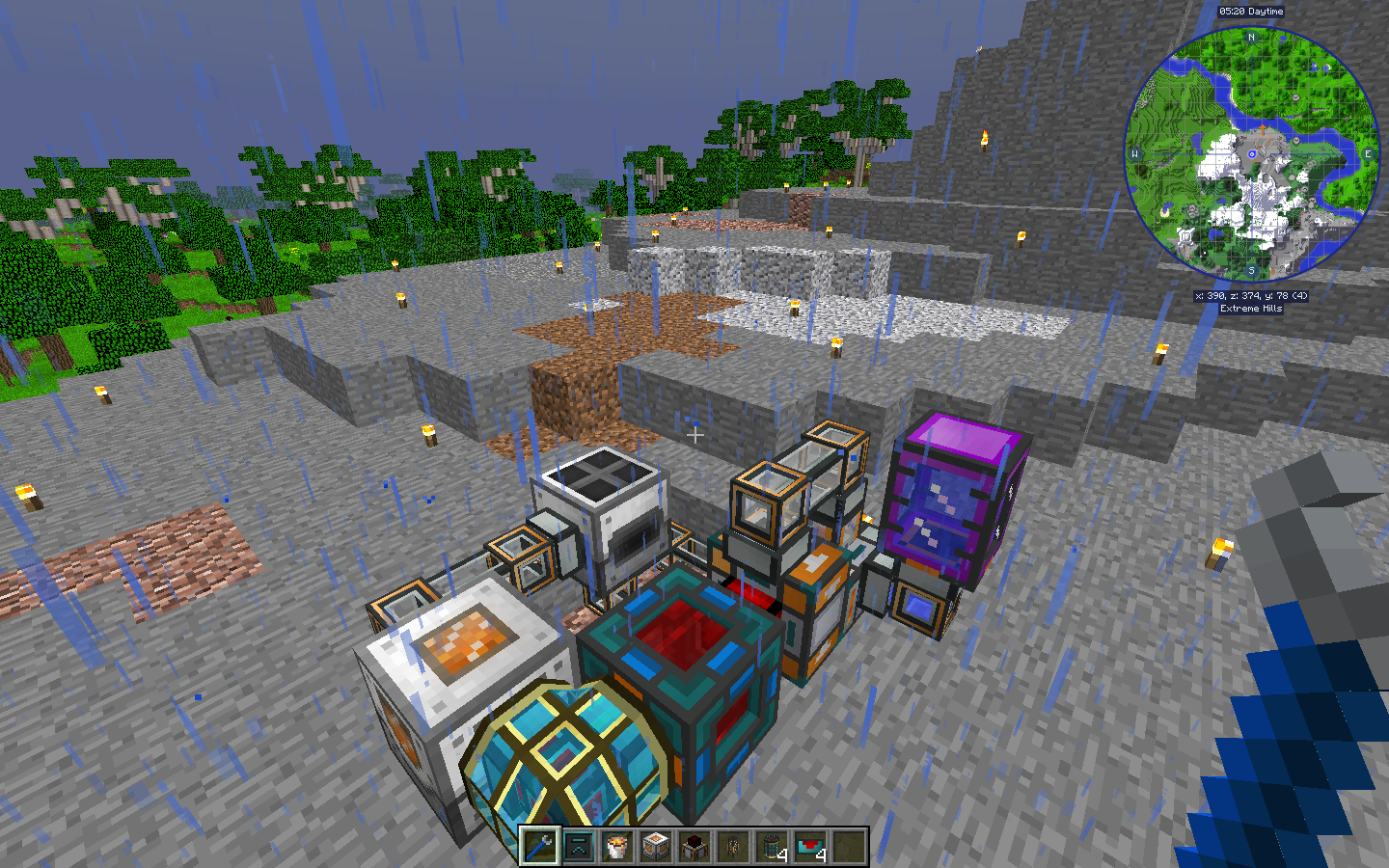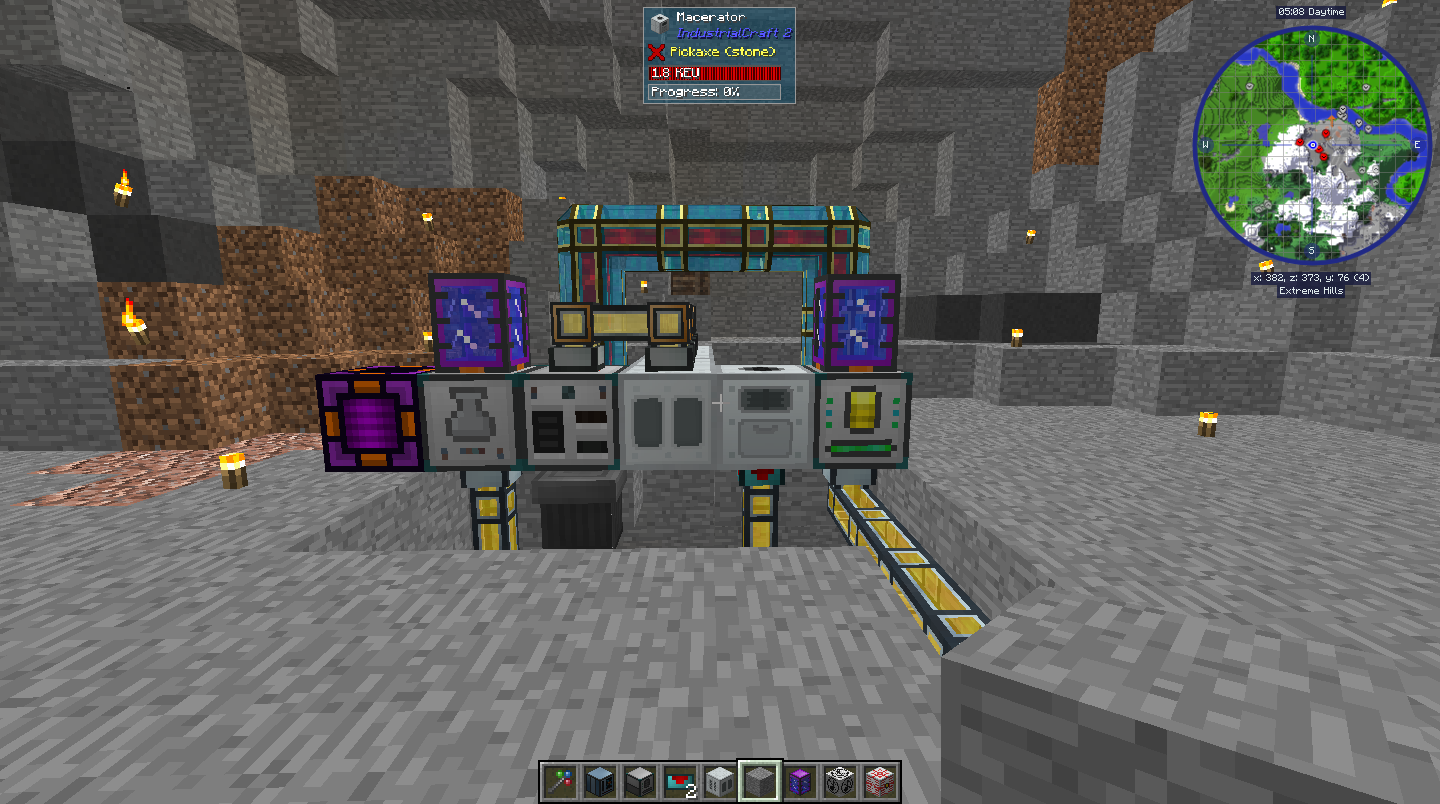With the new FTB Revelation pack out, people have come up with some crazy things already. I'd like to share what I've come up with.
First, there's the classic "What's thermodynamics?" build, in a very simplified form:

A resonant magmatic dynamo, with boiler conversion specialty augment and three fuel catalyzer augments, supplies steam to a resonant steam dynamo, with turbine conversion augments and three more fuel catalyzer augments. This produces about 270,000 RF for 1 bucket of lava (assuming the magmatic dynamo stays full of water), more than enough to produce 1 bucket of lava in an industrial foregoing lava fabricator. I have all that going to a black hole tank, just for a buffer.
Next, there's the reddit-inspired Phyto-Gro machine:

This takes one bucket of lava, one sapling (vanilla, of your choice) and eight iron ingots to start up, but once going, is completely self-sufficient. It makes wood (Phytogenic Insolator with a sapling infuser), passes it to a redstone furnace that makes charcoal, pulverizes some and compresses the rest (for pulverized charcoal and fuel, respectively). It takes cobble (from an Igneous extruder), pulverizes it into sand (I void the gravel), crafts sandstone (RFTools T3 crafter), and pulverizes that for niter. Finally, it crafts the iron into a chest plate, sends it and sand to an induction furnace, and gets eight iron ingots and one piece of slag back. The slag, niter, and pulverized charcoal make 16 phyto-gro, which is then looped back into the system.
The resonant steam dynamos are upgraded with 2 fuel catalyzer augments and 2 auxiliary transmission coil augments each. I run three of these dynamos, and gain a little extra charcoal.
This makes about a stack of regular phyto-gro a minute, about 200 RF/t beyond what it takes to run, and about 1 charcoal block of excess fuel every 2 minutes.
First, there's the classic "What's thermodynamics?" build, in a very simplified form:

A resonant magmatic dynamo, with boiler conversion specialty augment and three fuel catalyzer augments, supplies steam to a resonant steam dynamo, with turbine conversion augments and three more fuel catalyzer augments. This produces about 270,000 RF for 1 bucket of lava (assuming the magmatic dynamo stays full of water), more than enough to produce 1 bucket of lava in an industrial foregoing lava fabricator. I have all that going to a black hole tank, just for a buffer.
Next, there's the reddit-inspired Phyto-Gro machine:

This takes one bucket of lava, one sapling (vanilla, of your choice) and eight iron ingots to start up, but once going, is completely self-sufficient. It makes wood (Phytogenic Insolator with a sapling infuser), passes it to a redstone furnace that makes charcoal, pulverizes some and compresses the rest (for pulverized charcoal and fuel, respectively). It takes cobble (from an Igneous extruder), pulverizes it into sand (I void the gravel), crafts sandstone (RFTools T3 crafter), and pulverizes that for niter. Finally, it crafts the iron into a chest plate, sends it and sand to an induction furnace, and gets eight iron ingots and one piece of slag back. The slag, niter, and pulverized charcoal make 16 phyto-gro, which is then looped back into the system.
The resonant steam dynamos are upgraded with 2 fuel catalyzer augments and 2 auxiliary transmission coil augments each. I run three of these dynamos, and gain a little extra charcoal.
This makes about a stack of regular phyto-gro a minute, about 200 RF/t beyond what it takes to run, and about 1 charcoal block of excess fuel every 2 minutes.
Last edited:
